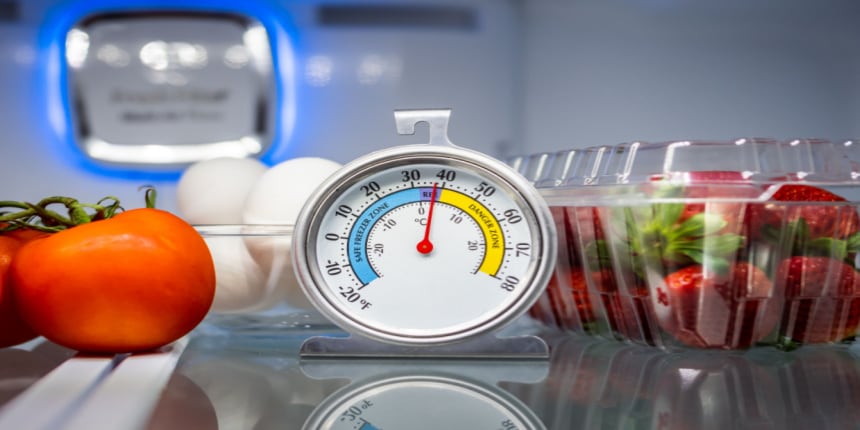STP Full Form

What is the full form of STP ?
The STP for the purposes of measurements and the documentation of chemical and physical processes, standard conditions for temperature and pressure, often known as Standard Temperature and Pressure (STP), are frequently employed to specify these circumstances. An essential tenet of chemistry is STP. In the STP system, temperature and pressure are both in their typical states. In this system, the pressure is 760 torr and the temperature is 273 K or 0oC. The volume of gas in STP can be determined using the usual formula. In this standard formula, the temperature is expressed in Kelvin and the pressure is expressed in torr.
What is STP?
"Standard temperature and pressure" is what the acronym STP stands for.
Explanation:
A system is said to have a temperature of 0 degrees centigrade at standard pressure and temperature. (273 Kelvin), and a constant 1 atm pressure equivalent to atmospheric pressure is maintained. Furthermore, a mole of any gas at STP takes up 22.414 L of space. Remember that this idea only applies to gasses.
STP of Formula
The idea of STP is fundamental to chemistry. Both pressure and temperature are present in the STP system in their usual states. It is estimated that this system has a pressure and temperature of 760 torrs and 273 K, respectively. Using the common formula, you can determine the gas volume in STP. The pressure is expressed in torr and the temperature is expressed in kelvin in this common formula.
V_{STP}=V \dfrac{T_{STP}}{T} \dfrac{P}{P_{STP}}
P_{STP}=760 torr
T_{STP} = 273K
Other equations that could be helpful in these circumstances include:
Gay-Lussac's law: P1T2 = P2T1
Charles's law: V1T2= V2T1 and
Boyle's law: P1V1= P2V2.
Uses of STP
For expressions of fluid flow rate and the quantities of liquids and gases, which are highly dependent on temperature and pressure, standard reference conditions are crucial. When standard-state conditions are used in computations, STP is frequently used. Calculations may be used to identify normal state conditions, which include standard pressure and temperature. For instance, \delta S^{o} refers to the entropy change at STP.
Solved Examples
Calculate the volume of a gas at STP with a volume of 0.5 L and temperatures of 300 K and 700 tr, respectively.
Solution: Given values are,
T = 300K
P = 700 torr
The volume of the gas = 0.5L
The formula for the volume of a gas at STP is,
V_{STP}=V \dfrac{T_{STP}}{T} \dfrac{P}{P_{STP}}
STP=0.5 \times \dfrac{273}{300} \times \dfrac{700}{760}
V_{STP}=4.190L
Hence, V_{STP}=4.190L
A gas has a 30-liter volume at 350 K and 1100 Torr. Calculate the gas's volume at STP.
Solution: The figures we are aware of are
T = 350K
P = 1100 torr
The volume of the gas = 30L
The formula for gas volume in the STP is,
V_{STP}=V \dfrac{T_{STP}}{T} \dfrac{P}{P_{STP}}
STP=30 \times \dfrac{273}{350} \times \dfrac{1100}{760}
V_{STP}= 33.868L
Hence, V_{STP}= 33.868L
Key Takeaways
The term "STP" stands for "Standard Temperature and Pressure." But many groups define the "standard" in varied ways.
Gases are the most frequently mentioned when discussing STP values because of how drastically temperature and pressure affect their features.
STP is sometimes described as having a temperature of 273 K (zero degrees Celsius or 32 degrees Fahrenheit) and a standard pressure of 1 atm. In these circumstances, a mole of gas takes up 22.4 L.
It's best practice to specify the temperature and pressure conditions for measurements rather than just saying "STP" because the standard differs per industry.
Conclusion
An essential tenet of chemistry is STP. In the STP system, temperature and pressure are both in their typical states. In this system, the pressure is 760 torr and the temperature is 273 K. The volume of gas in STP can be determined using the usual formula. In this standard formula, the temperature is expressed in Kelvin and the pressure is expressed in torr.
Chemistry uses the acronym STP, which stands for "Standard Temperature and Pressure." The measurements of fuels, such as gas density, are the ones where STP is most frequently utilized. The standard pressure is 1 atm, and the standard temperature is 273 K (0 degrees Celsius or 32 degrees Fahrenheit). At atmospheric pressure of sea level, this is the freezing point of pure water. At STP, one mole of gas occupies 22.4 liters of space (molar volume).
Other Related Full Forms -
Frequently Asked Questions (FAQs)
V_{STP} = V \times \dfrac{}273.15}{T} \times \dfrac{P}{760}, Kelvins, Torrs, and Liters are all used in this STP formula.
The acronym "STP" stands for "Standard Temperature and Pressure" in chemistry. The most typical application of STP is when calculating the density of gases. The standard pressure is 1 atm, and the standard temperature is 273 K (0^o Celsius or 32^o Fahrenheit).
A system is considered to be at standard conditions of temperature and pressure when its temperature is zero degrees Celsius (273 kelvins) and its atmospheric pressure is always 1 atm. Furthermore, a mole of any gas at STP takes up 22.414 L of space. Remember that this idea only applies to gases.
At standard temperature and pressure, sometimes known as STP, only bromine and mercury are liquids. The group those elements belong to can be found on the periodic chart. Mercury has an atomic number of 80, while the bromine atom has a number of 35.
At standard temperature and pressure (STP), the gaseous element group includes hydrogen (H2), nitrogen (N2), oxygen (O2), fluorine (F2), chlorine (Cl2), and the noble gases helium (He), neon (Ne), argon (Ar), krypton (Kr), xenon (Xe), and radon (Rn).